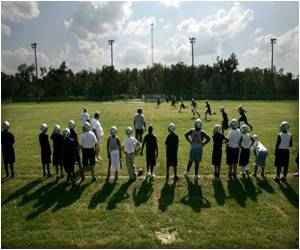At the Children's Hospital of Eastern Ontario (CHEO) pediatric emergency medicine researchers together with the Ontario Neurotrauma Foundation (ONF) launch the first comprehensive pediatric concussion guidelines.

The pediatric guidelines were initiated by ONF, managed by CHEO, and developed by an expert panel including over 30 members across Canada and the United States led by Dr. Roger Zemek. The project team included representation from the full spectrum of pediatric health disciplines (emergency medicine, family practitioners, neurologists, rehabilitation professionals, etc.) It took over 2 years to review more than 4,000 academic papers, and numerous meetings, to create the first comprehensive pediatric concussion guidelines for healthcare professionals, parents and/or caregivers, schools and/or community sports organizations.
These new guidelines provide healthcare providers with evidence-based recommendations to standardize the diagnosis and management of concussion in children aged 5 to 18 years old, from the initial assessment through to the period of recovery (which might last months.) Furthermore, it fills a need to standardize the reintegration into school and social activities, both of which are crucial to children and adolescents during their formative years.
"These are the first comprehensive pediatric guidelines that we're aware of; they reflect the very best available evidence today," said Dr. Zemek. "It was fascinating to see how recommendations have changed over time. Years ago, children were told to 'rest' after concussion, which means something entirely different today with the onset of technology – now, rest also includes a break from screen time."
The guidelines include numerous tools and clear instructions for all levels of user. For example, the guidelines provide a pocket tool to be used by a coach or parent at the sideline to recognize concussion and offer advice on when to remove kids from play and when to seek emergent medical attention. For the emergency department physician, algorithms are provided to guide the decision whether or not to obtain CT scans, and examples of written discharge handouts for patients and families are included. For family physicians and nurse practitioners in the community, the guidelines provide recommendations for ongoing symptom management and decision tools to help navigate 'return-to-learn' and 'return-to-play'. For school boards, the guidelines provide an example of a policy statement regarding pediatric concussion.
"These guidelines are exceedingly clear and comprehensive. I think this will be an indispensable resource for caregivers in a wide range of care settings, and also be accessible for the general public," saidRebekah Mannix, MD, MPH, Assistant Professor of Pediatrics, Boston Children's Hospital, Harvard Medical School, Boston, MA.
Source-Eurekalert
 MEDINDIA
MEDINDIA



 Email
Email






